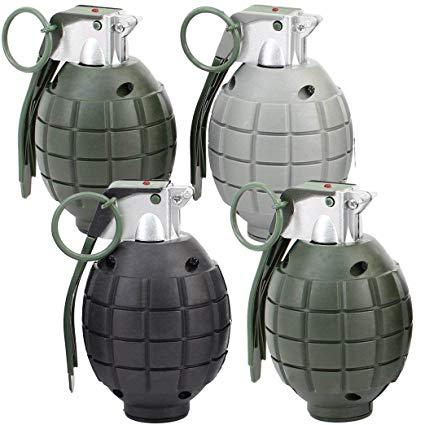How does grenade work?
Hello aspirants,
Have you ever thought who invented grenades, how does it blast and do damage? If you haven’t then don’t worry DDE is there to clear all your doubt. In this post, everything will be explained, you will have a clear picture of all about grenades.
Let's begin
What is a grenade?
- A grenade is a small explosive weapon typically thrown by hand.
- Generally, a grenade consists of an explosive charge, a detonating mechanism, and firing pin inside the grenade to trigger the detonating mechanism.
Why were grenades needed when we had guns?
- When enemy forces are shielded by trenches and fortifications, it was difficult to see or to shoot with direct-fire weapons such as rifles.
- In close quarters fighting, especially in trenches, it was also challenging to inflict casualties on the enemy without exposing one’s self to fire.
- All these lead to the invention of a hand-thrown weapon called grenade.
When was grenade used?
- The first grenade was used in 1914 and was hand-made, consisting of old cans filled with nails and bits of metal and packed with gunpowder.
- They often proved as dangerous to their makers as to their intended targets, due to the risk of premature explosion.
How does grenade work?
- The outer shell of the grenade, made of serrated cast iron, holds a chemical fuze mechanism, which is surrounded by explosive material.
- The grenade has a filling hole for pouring in the explosive material.
- Usually, the striker is held in place by the striker lever on top of the grenade, which is held in place by the safety pin.
- When the pin is removed, nothing is holding the lever in position, which means there is nothing holding the spring-loaded striker up.
- The spring throws the striker down against the percussion cap. The impact ignites the lid, creating a small spark.
- The spark ignites a slow-burning material in the fuze. In about four seconds, the delay material burns all the way through.
- The end of the delay element is connected to the detonator, a capsule filled with more combustible material.
- The burning equipment at the end of the delay ignites the article in the detonator, setting off an explosion inside the grenade.
- The explosion ignites the explosive material around the sides of the grenade, creating a much more massive explosion that blows the grenade apart.
- Pieces of metal from the outer casing fly outward at high speed, embedding in anybody and anything within range.
- This sort of grenade may contain additional serrated wire or metal pellets for increased fragmentation damage.
Hope this was useful, keep following DDE for more.
What’s your Reaction?
+1
+1
+1
+1






 Order Now on Amazon
Order Now on Amazon
